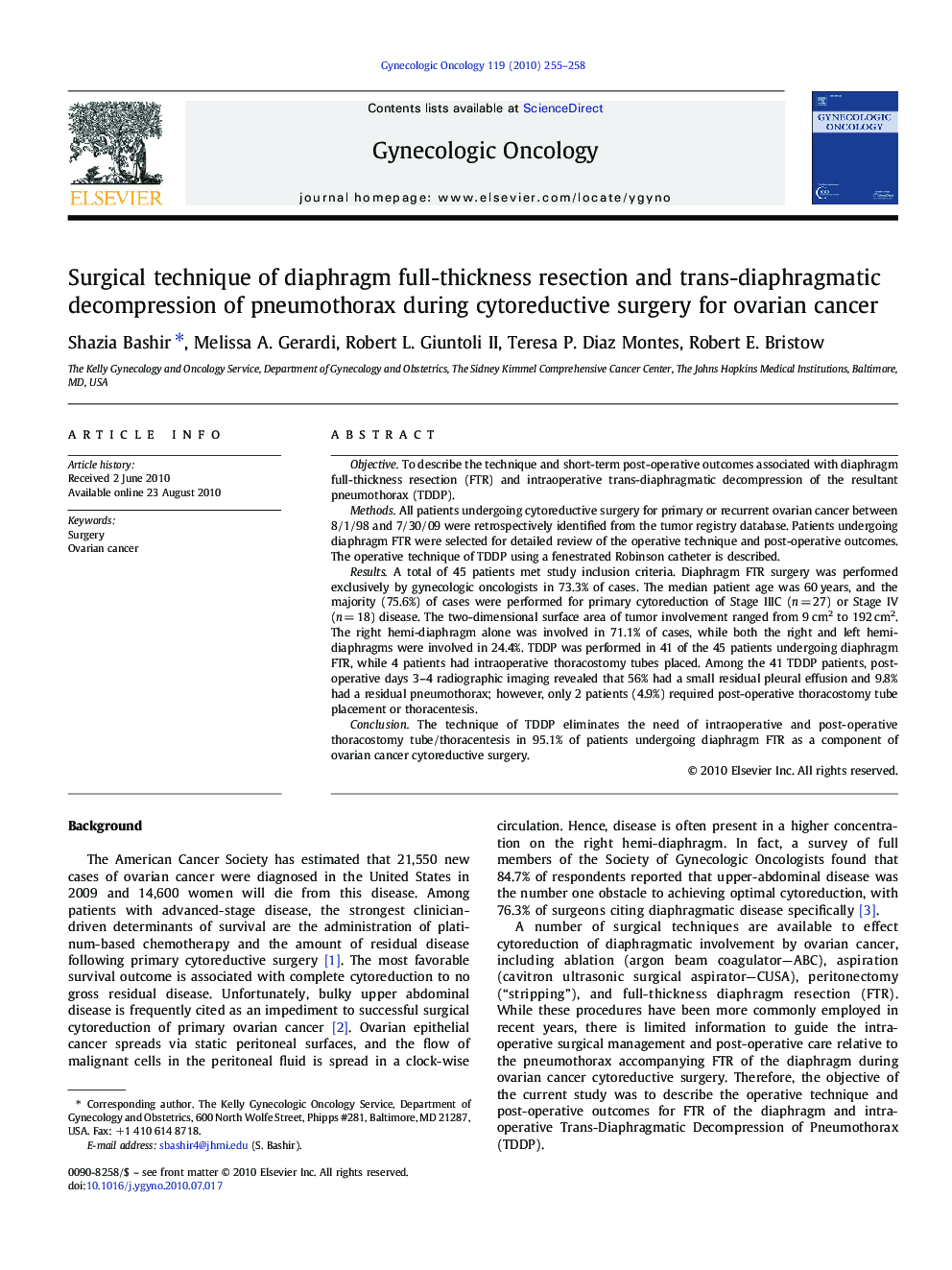| کد مقاله | کد نشریه | سال انتشار | مقاله انگلیسی | نسخه تمام متن |
|---|---|---|---|---|
| 3947325 | 1254426 | 2010 | 4 صفحه PDF | دانلود رایگان |

ObjectiveTo describe the technique and short-term post-operative outcomes associated with diaphragm full-thickness resection (FTR) and intraoperative trans-diaphragmatic decompression of the resultant pneumothorax (TDDP).MethodsAll patients undergoing cytoreductive surgery for primary or recurrent ovarian cancer between 8/1/98 and 7/30/09 were retrospectively identified from the tumor registry database. Patients undergoing diaphragm FTR were selected for detailed review of the operative technique and post-operative outcomes. The operative technique of TDDP using a fenestrated Robinson catheter is described.ResultsA total of 45 patients met study inclusion criteria. Diaphragm FTR surgery was performed exclusively by gynecologic oncologists in 73.3% of cases. The median patient age was 60 years, and the majority (75.6%) of cases were performed for primary cytoreduction of Stage IIIC (n = 27) or Stage IV (n = 18) disease. The two-dimensional surface area of tumor involvement ranged from 9 cm2 to 192 cm2. The right hemi-diaphragm alone was involved in 71.1% of cases, while both the right and left hemi-diaphragms were involved in 24.4%. TDDP was performed in 41 of the 45 patients undergoing diaphragm FTR, while 4 patients had intraoperative thoracostomy tubes placed. Among the 41 TDDP patients, post-operative days 3–4 radiographic imaging revealed that 56% had a small residual pleural effusion and 9.8% had a residual pneumothorax; however, only 2 patients (4.9%) required post-operative thoracostomy tube placement or thoracentesis.ConclusionThe technique of TDDP eliminates the need of intraoperative and post-operative thoracostomy tube/thoracentesis in 95.1% of patients undergoing diaphragm FTR as a component of ovarian cancer cytoreductive surgery.
Journal: Gynecologic Oncology - Volume 119, Issue 2, November 2010, Pages 255–258